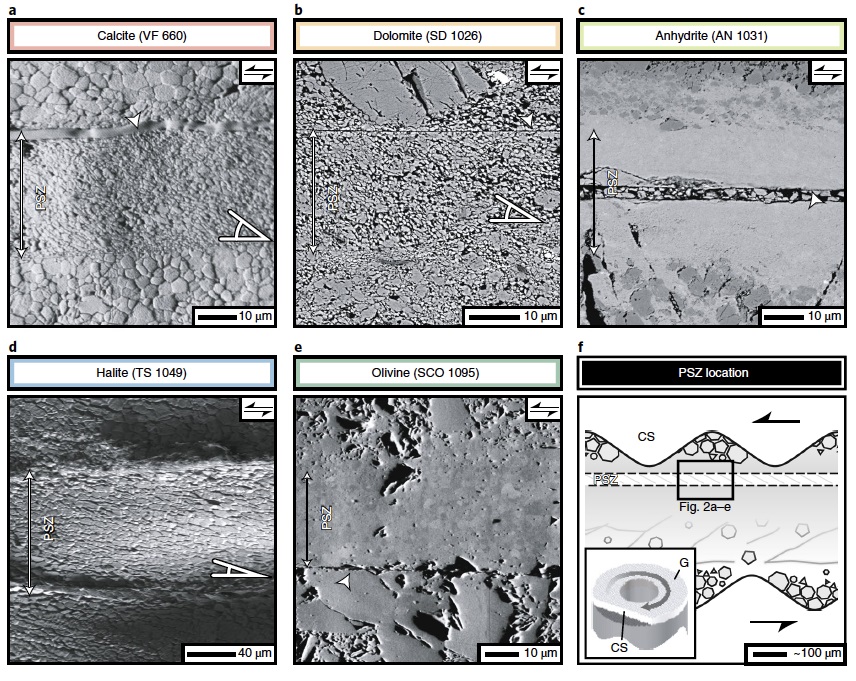Coseismic fault lubrication by viscous deformation

New Nature Geoscience paper by our team in the Rock Mechanics Laboratory, including Giacomo Pozzi, Nicola De Paola, Stefan Nielsen, Bob Holdsworth and Telemaco Tesei, shows that viscous deformation is a potentially prevalent mechanism of fault lubrication during earthquakes.
Despite the hazard posed by earthquakes, we still lack fundamental understanding of the processes that control fault lubrication during earthquake propagation. Several mechanisms, triggered by shear heating, have been proposed to explain the coseismic weakening of faults, but none of these mechanisms can account for experimental and seismological evidence of weakening. In this new study, we report laboratory experiment results and microstructural observations showing that viscous deformation is an important, widespread and quantifiable coseismic lubrication process. The operation of these highly effective fault lubrication processes means that more energy is then available for rupture propagation and the radiation of hazardous seismic waves.
Link to the article on the Journal page: https://www.nature.com/articles/s41561-021-00747-8
Link to the full article: https://rdcu.be/ckK9S


/prod01/prodbucket01/media/durham-university/departments-/earth-sciences/60228-1-1998X749.jpg)